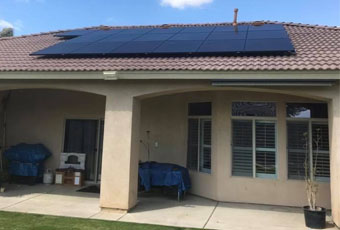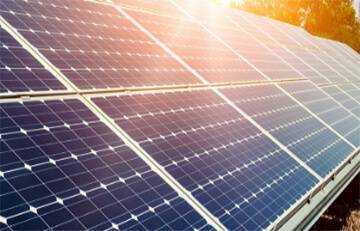Which appliances are most energy efficient and is the extra expense worth it?
Which appliances are most energy efficient and is the extra expense worth it?
A large number of household appliances available to be purchased in the United States are Energy STAR affirmed, which implies they utilize less energy than their ordinary, non-Energy STAR partners. Notwithstanding, Energy STAR machines frequently include a significant price premium, making numerous property holders to ponder: are the more productive appliances justified, and worth paying a premium?
The Energy STAR program was launched and maintained by the U.S. Environmental Protection Agency (EPA) and the U.S. Department of Energy (DOE) in 1992.
By and large, most of the resulting test comparisons were primarily positive. The amount of money you’ll save relies upon your power rates (from your power company) as well as the machines you’re hoping to change out, and also the incentives accessible for these new energy efficient items in your home or business.
Energy STAR appliances should lessen your electricity bills in the long term.
By and large, home machines – including clothes washers, humidifiers, dryers, dishwashing machines, refrigerators, freezers, and air purifiers –represent 20% of your home’s complete electricity bill. An Energy STAR apparatus will utilize somewhere in the range of ten to fifty percent less energy every year compared to its non-Energy STAR proficient counterpart.
By replacing the appliances you have in your home with Energy STAR certified machines, you are embarking on a long term investment decision that will lessen your utility bill which is particularly imperative when you perceive that power rates are ever-increasing. It is also to be noted that a few machines utilize more energy compared to others. The sum you spare is likewise reliant on how long you have been using your appliance and the power rates which you are paying.
Clothes Dryers
Dryers are one of the most energy-hungry appliances you’ll find in the normal American home. As per the NRDC, a run of the mill dryer can expend as much energy every year as a clothes washer and dishwasher combined and peradventure you have a more seasoned model, the number can turn out to be significantly higher. Energy STAR dryers utilize 20% less power than a customary model and will spare you approximately $210 in electricity bills through the lifetime of your dryer.
Washers
Peradventure you combine your energy efficient dryer with a energy proficient clothes washer; you’ll see extra reserve funds on your electricity bill as well as your water bills. An Energy STAR guaranteed garments washer utilizes forty to fifty percent less energy and around 55% less water when compared to standard washers.
If you replace your regular clothes washer with a energy effective model, it is possible for you to set aside to $50 every year on your water and utility bills. Energy proficient front-loading garments washers likewise require less clothing cleanser compared to top-loading garment washers, thereby enabling you to spare more cash weekly on detergents.
Refrigerators
There had been huge advances in cooler innovation in the course of recent years, which implies that old fridges are one of the greatest energy hoards in numerous U.S. homes. The Energy STAR affirmed freezers that are available in the market today are almost 10% more energy effective compared to other models which meet the government least energy standard. Peradventure you have a more seasoned fridge, you can spare considerably more on your energy bills with a energy proficient freezer, Energy STAR qualified freezers utilizes about 40% less energy than the traditional models that were sold in 2001.
Dishwashing machines
Dishwashing machines may not utilize the same amount of power as a continually running fridge or even a high-heat garment dryer, yet the power and water which is expected to operate a dishwasher add up. Energy STAR ensured dishwashing machines are 12% more proficient than non-guaranteed models as of now available to be purchased, and using an energy-efficient dishwasher will spare you approximately $25 per year.
Energy proficient machine discounts can build your investment funds
While energy proficient machines can include some significant price premium, they’ll spare you cash on the long run by lessening your power bills. By and large, there are additional states, nearby, or utility discounts that will lessen your daily costs. Also, in case you’re disposing of a more seasoned apparatus, you might be given a discount for reusing it.
When would it be advisable for you to put resources into top energy efficient machines?
When you change out the apparatuses in your apartment with energy proficient upgrades, then you can spare many dollars annually on your energy bill. The reserve funds you accomplish from a solitary energy effective apparatus may appear to be little without anyone else, yet your home machines will keep going for somewhere in the range of 10 to even 20 years, those little months to month investment funds will become very significant with time, and mostly, the value premium you will pay will be quite more than counterbalanced by your energy investment funds.
That being stated, the measure of cash you’ll spare with energy effectiveness measures is subject to the amount you’re willing to contribute. For instance, you can spare a couple of dollars from your bills by using LEDs in the place of glowing lights, but just in case you want to significantly reduce your bills, you’ll need to change out the machines and systems that utilize the most energy.
Considerably more noteworthy returns: introducing sunlight based board system
While energy proficiency measures will help protect your house against increasing power costs, you can make it a stride further by introducing sun powered panels on your properties to produce your own perfect power. When you decide to “go sunlight based,” you guarantee that your power rates will stay stable throughout a period of 20 or more years. The expense of introducing solarhas decreased by in excess of 50 percent in the course of recent years, which implies your sun powered investment funds are more than any time in recent memory.The national governments as of now set gauge proficiency principles for appliances available to be purchased in the U.S., which implies that no products available in the market are “wasteful.” Energy STAR ensured machines, notwithstanding, are more effective than the regular models accessible available to be purchased. Your general profit now depends on the efficiency of your present appliances which is to a great extent the function of how long you have been using it. You’ll see progressively extreme investment funds when you change out your more established ordinary machines with energy effective choices, as opposed to change outing a more current apparatus.














